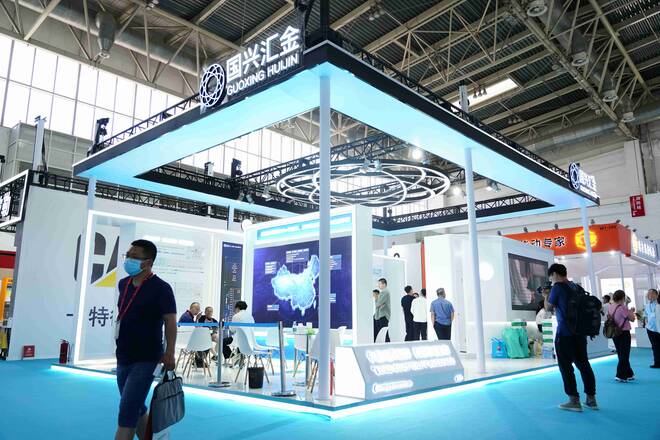Distributed Optical Fiber Sensing Technology: A Pioneer of Intelligent Sensing Across Multiple Fields
In today’s era of rapid technological advancement, distributed optical fiber sensing technology stands out with its unique advantages, becoming a key driver in enabling the intelligent and precise development of various industries.
I. The Guardian of Safety in the Energy Sector
In the oil and gas industry, distributed optical fiber sensing technology plays a critical role. Long-distance pipelines act as the lifelines of industry, and this technology can be deployed along the entire length of the pipeline to monitor temperature, pressure, and strain in real time. When minor leaks occur, the seepage of oil or gas triggers changes in temperature or pressure. Distributed optical fiber sensors can promptly detect these anomalies, accurately locate the leakage point, and effectively prevent large-scale accidents, minimizing environmental pollution and the significant economic losses associated with shutdowns and repairs. On offshore oil and gas platforms, the technology continuously monitors the operational status of subsea pipelines and risers under harsh marine conditions, ensuring stable energy transmission.
In the power sector, distributed optical fiber sensing technology is equally indispensable. Electrical cables generate heat during operation, and distributed optical fiber temperature sensors can precisely monitor the temperature distribution along the cables. They identify overheating areas in time to prevent fires and outages caused by cable overheating, ensuring reliable power supply. Additionally, in substations, monitoring the temperature and strain of equipment such as transformers and switchgear helps identify potential faults early, enabling intelligent operation and maintenance of the power system and improving grid safety and stability.
II. The Intelligent Monitor of Infrastructure
In bridge engineering, distributed optical fiber sensing technology acts as the “nervous system” of the structure. Over time, bridges experience deformation and stress changes due to factors like vehicular loads, wind, and earthquakes. By deploying distributed optical fiber sensors in critical areas such as main girders, piers, and cables, the technology provides real-time monitoring of strain, displacement, and vibration. This enables comprehensive and precise assessments of structural health. For instance, in large-span cable-stayed bridges, sensors accurately measure tension changes in the cables, detecting relaxation or breakage risks early. This provides scientific support for maintenance and management, extends the service life of bridges, and ensures traffic safety.
Tunnel construction and operation also rely on distributed optical fiber sensing for safety assurance. During construction, the technology monitors deformation and stress changes in surrounding rock, providing real-time data to support safe operations and helping engineers adjust construction plans promptly. In the operational phase, it monitors strain, cracks, and water seepage in tunnel linings, enabling early detection of structural issues to ensure the tunnel's integrity and traffic safety.
In railway transportation, distributed optical fiber sensors monitor the condition of railway tracks. They measure temperature, strain, and displacement in real time, detecting issues such as uneven tracks and loose fasteners. This provides accurate data for maintenance, enhancing the safety and comfort of rail transport and ensuring the smooth operation of high-speed trains.
III. The Precision Monitoring Tool in Industrial Manufacturing
In the field of large industrial equipment, such as large rotating machinery, pressure vessels, and conveyor belts in industries like petrochemicals, steel, and machinery manufacturing, distributed fiber optic sensing technology plays a significant role. It enables real-time monitoring of equipment operating conditions and precise measurement of key parameters such as temperature, strain, and vibration at critical points.For example, in the monitoring of reactors in petrochemical plants, temperature and strain monitoring of the reactor walls can promptly detect abnormalities in the reaction process. This helps prevent equipment failures and safety incidents caused by over-temperature or over-pressure. Additionally, it contributes to optimizing production processes, improving product quality, and enhancing production efficiency.
In the warehousing and logistics industry, distributed fiber optic sensors can monitor parameters such as temperature and humidity in real-time for storage environments that have high environmental requirements, such as those for grain, tobacco, and pharmaceuticals. This ensures the stability of the storage environment, prevents spoilage or damage caused by changes in temperature and humidity, and safeguards the quality and safety of stored goods.
IV. The Advanced Sentinel for Security Protection
In the security field, distributed fiber optic sensing technology establishes a robust defense line. By deploying sensing fibers around critical locations such as airports, prisons, and military bases, a highly sensitive perimeter security system can be formed. When unauthorized intrusions or physical contact occur, the optical signals within the fibers change, allowing the system to instantly detect and trigger an alarm. This enables real-time monitoring and early warning of target areas, effectively preventing security incidents.
In the field of building safety monitoring, distributed fiber optic sensors can be installed at critical structural components of buildings, such as beams, columns, and walls. These sensors monitor deformation, crack development, and temperature changes during construction and throughout the building's lifespan. For complex structures like high-rise buildings and large-span structures, the technology can promptly detect potential safety hazards, providing reliable data support for safety assessments and maintenance. This ensures the safety of residents and users, protecting lives and property.
Distributed fiber optic sensing technology, with its advantages of high precision, distributed measurement, and strong anti-interference capability, has found widespread application in various fields such as energy, transportation, industry, and security. It injects powerful technological momentum into the development of these industries. Its future application prospects are bound to be even broader, continuously driving human society toward greater intelligence and safety.

